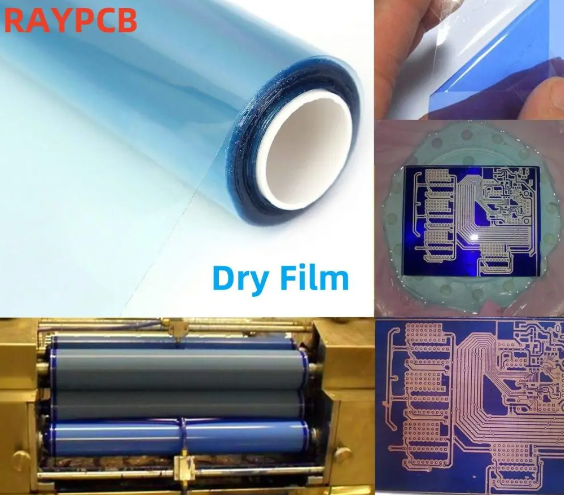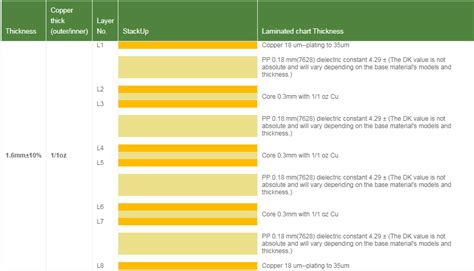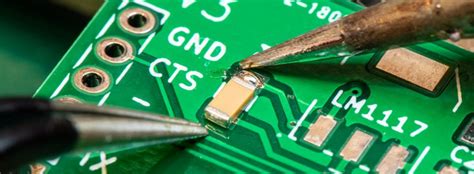Potential Hazards in Dry Film Lamination for PCB Manufacturing
Abstract
Dry film lamination is a critical process in printed circuit board (PCB) manufacturing that involves applying a photosensitive polymer film to copper-clad substrates. While this technology offers numerous advantages over traditional wet processes, it carries several potential hazards that can affect product quality, manufacturing efficiency, and worker safety. This paper examines the key hazards associated with dry film lamination in PCB production, including contamination risks, adhesion failures, bubble formation, dimensional stability issues, exposure-related problems, and environmental concerns. By understanding these hazards, manufacturers can implement appropriate preventive measures to ensure consistent quality and safe production environments.
1. Introduction
The dry film lamination process has become a standard in PCB manufacturing due to its convenience, consistency, and environmental benefits compared to liquid photoresists. The dry film resist (DFR) typically consists of three layers: a protective polyethylene cover sheet, the photosensitive resist layer, and a polyester carrier sheet. During lamination, the film is heat-pressed onto the copper surface, creating a uniform coating for subsequent imaging and etching processes.
Despite its widespread adoption, the dry film lamination process presents several technical challenges and potential hazards that can compromise PCB quality if not properly managed. These hazards span from material handling through the entire lamination process and can significantly impact yield rates and final product reliability.

2. Major Hazards in Dry Film Lamination
2.1 Contamination Risks
Surface contamination represents one of the most significant hazards in dry film lamination:
- Particulate Contamination: Dust, dirt, or other airborne particles on the copper surface can prevent proper film adhesion, leading to pinholes or complete resist lift-off during development. Even micron-sized particles can cause imaging defects that translate into circuit breaks or shorts.
- Chemical Contamination: Residuals from previous processing steps (such as oxides, fingerprints, or cleaning solutions) can create weak adhesion areas. Acidic or alkaline residues may chemically attack the dry film, altering its photosensitivity or development characteristics.
- Organic Contamination: Oils, greases, or other organic materials from handling can create non-uniform surfaces that interfere with the film’s ability to bond to the copper substrate.
2.2 Adhesion Failures
Inadequate adhesion between the dry film and copper surface can lead to multiple downstream issues:
- Improper Lamination Parameters: Incorrect temperature, pressure, or speed settings during lamination can result in either insufficient bonding or excessive flow of the resist material. Typical lamination temperatures range from 100-130°C, and deviations beyond ±5°C can significantly impact adhesion.
- Surface Preparation Issues: Poor copper surface treatment (cleaning, micro-etching, or roughening) fails to provide the necessary mechanical tooth for mechanical bonding. An optimal surface roughness of 0.3-0.8 μm Ra is generally recommended for proper adhesion.
- Material Incompatibility: Some copper surface treatments or finishes may chemically interfere with the dry film’s adhesive components. This is particularly problematic with certain anti-tarnish coatings or alternative conductor materials.
2.3 Bubble Formation
Entrapped air or volatiles between the film and substrate create bubbles that cause several problems:
- Imaging Defects: Bubbles scatter light during exposure, creating poorly defined patterns or completely unexposed areas. Bubbles as small as 50 μm can cause significant imaging issues in high-density designs.
- Etching/Plating Problems: Bubble sites allow etchant or plating solution penetration, leading to undercutting or unwanted metal deposition. This is especially critical for fine-line circuits below 50 μm width.
- Thermal Stress Points: Bubbles create weak points that may rupture during thermal cycling or mechanical stress in subsequent processing.
2.4 Dimensional Stability Issues
Dry film materials are subject to several dimensional stability hazards:
- Thermal Expansion Mismatch: The coefficient of thermal expansion (CTE) difference between the dry film (typically 50-70 ppm/°C) and copper (17 ppm/°C) can cause stress-induced deformation during temperature variations.
- Moisture Absorption: Most dry film materials are hygroscopic, absorbing 0.5-1.5% moisture under typical room conditions. This moisture can lead to dimensional changes up to 0.1% after lamination.
- Stress Relaxation: The mechanical stress induced during lamination may gradually relax, causing slight dimensional shifts over time before exposure.
2.5 Exposure-Related Hazards
The photosensitive nature of dry films introduces several unique hazards:
- Premature Exposure: Accidental exposure to ambient light (especially UV-rich sources) can partially activate the resist, reducing contrast and resolution. Most dry films are sensitive to light below 420 nm wavelength.
- Sensitivity Variations: Batch-to-batch differences in photosensitivity (typically ±5%) can lead to inconsistent exposure results if not properly compensated.
- Post-Exposure Delay Effects: Some dry film chemistries continue chemical reactions after exposure, causing critical dimension (CD) variation if development is delayed excessively.
2.6 Environmental and Health Hazards
Dry film materials present several workplace safety concerns:
- Chemical Hazards: Many dry films contain acrylic monomers or oligomers that can cause skin irritation or allergic reactions with prolonged exposure. The OSHA permissible exposure limit (PEL) for most acrylates is 0.5 mg/m³ as an 8-hour time-weighted average.
- Thermal Decomposition Products: Overheating during lamination (above 150°C) may generate hazardous decomposition products including formaldehyde, methyl methacrylate, and other volatile organic compounds (VOCs).
- Waste Disposal Issues: Spent dry film and cleaning materials often require special handling as hazardous waste due to heavy metal contamination from subsequent processing.

3. Process-Specific Hazards
3.1 Lamination Stage
The actual film application process contains multiple hazard points:
- Temperature Control: ±2°C variation is typically required for consistent results. Hot roll temperatures usually range from 105-125°C depending on film type.
- Pressure Uniformity: Non-uniform roll pressure (standard range 3-6 kg/cm²) causes thickness variation. Even 10% pressure variation can create measurable thickness differences.
- Speed Effects: Lamination speeds (typically 1-3 m/min) must balance productivity with sufficient heat transfer. Excessive speed reduces effective contact time below the required 15-30 seconds.
3.2 Handling and Storage
Improper material handling creates multiple risks:
- Cold Storage Requirements: Most dry films require storage at 10-20°C to maintain shelf life (typically 6-12 months). Room temperature storage can reduce shelf life by 50% or more.
- Moisture Sensitivity: Films must acclimate to room temperature in sealed packaging for 2-4 hours before use to prevent condensation.
- Mechanical Damage: Kinks, folds, or creases in the film roll create permanent defects that transfer to laminated panels.
4. Mitigation Strategies
4.1 Process Control Measures
- Implement strict environmental controls (cleanroom Class 10000 or better, 22±2°C, 50±5% RH)
- Establish rigorous surface preparation protocols including chemical cleaning and micro-etching
- Maintain precise lamination parameter control with automated monitoring systems
- Use real-time bubble detection systems (ultrasonic or optical)
4.2 Material Selection
- Choose dry film formulations matched to specific copper surface conditions
- Select films with appropriate resolution capabilities (1:1 aspect ratio capability for HDI applications)
- Consider low-shrinkage formulations for high-precision applications
4.3 Safety Protocols
- Install proper ventilation systems (minimum 10 air changes/hour)
- Provide appropriate personal protective equipment (nitrile gloves, safety glasses)
- Implement comprehensive worker training programs
- Establish emergency response procedures for chemical exposures
5. Conclusion
Dry film lamination for PCB manufacturing, while technologically mature, presents numerous potential hazards that can affect product quality, process efficiency, and workplace safety. These hazards range from technical challenges like contamination control and dimensional stability to environmental health and safety concerns. Through proper understanding of these risks and implementation of appropriate control measures, manufacturers can significantly reduce defect rates while maintaining safe working conditions. Future developments in dry film technology continue to address many of these hazards through improved material formulations and more sophisticated application equipment.






